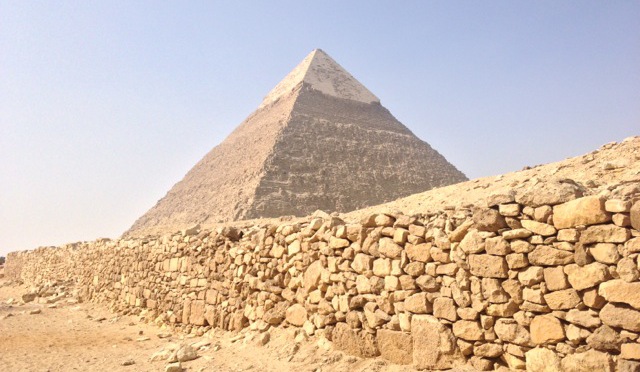After tearing ourselves away from the pool(s) and switching back into traveler mode, our first order of business was to arrange a trip to the most well-known of Egyptian attractions, the Pyramids of Giza. While it is possible to reach Giza via metro/bus or private taxi, we opted to hire a driver for the day so that we could tackle three sites: the Giza Necropolis, Saqqara, and Memphis.1
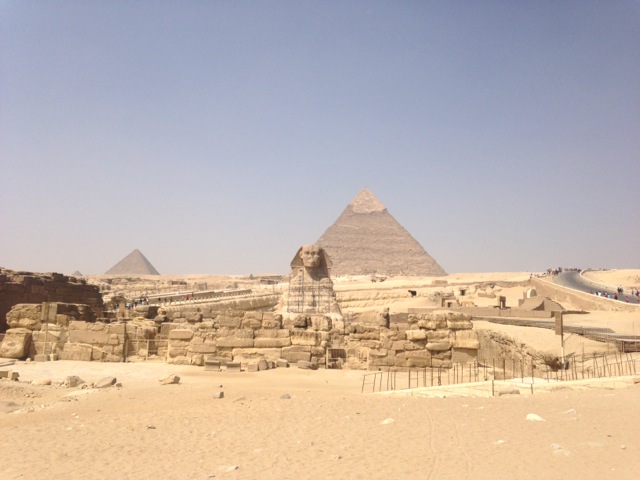
After nine-hours of sightseeing, we ended the day incredibly hot, tired, and dusty, but it was so worth it.
Giza Necropolis
In trying to decide whether we should visit Giza via public transit or hire a driver for the day, we came across a bunch of comments that the site is completely overrun with intimidating touts. When I visited Giza in 2007, we had experienced some hassling (the most memorable being a donkey owner who kept pressuring a friend to ride his animal, which he had named “Michael Jackson”) – but, from everything we read, it sounded like the situation had gotten exponentially worse as a result of the post-revolution tourism slump. Our experience, I am pleased to report, did not resemble any of these TripAdvisor horror stories. The cluster of unofficial “guides,” owners of camels, horses, and donkeys, and souvenir sellers can be pushy and annoyingly insistent, but they didn’t really materially detract from our visit.
One of the highlights of a trip to the Giza Necropolis is scrambling through the darkened hallways of the Great Pyramid (more formally known as the Pyramid of Cheops). It’s an experience not to be missed (unless, of course, you’re claustrophobic), and, because admission is limited to 150 people in the morning and 150 people in the afternoon, we made sure to arrive early in the day.2
There are several passages inside the Great Pyramid (see here for a diagram), but tourists are only permitted to shuffle along a specified path to the so-called King’s Chamber.3
To reach this chamber, you must first climb through a low ascending corridor.4
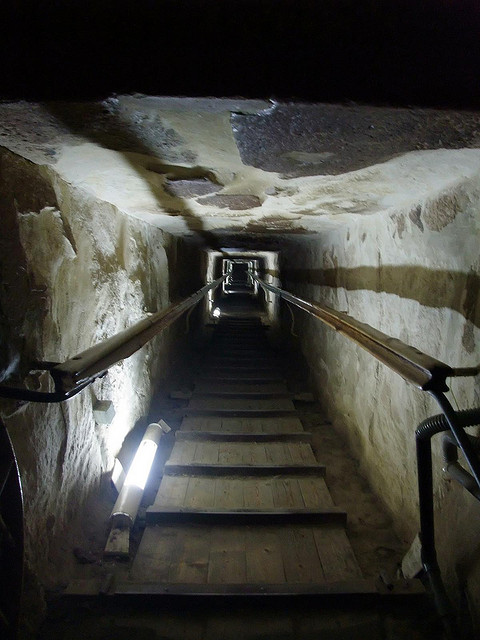
Next, you enter the Great Gallery. The ceiling is much higher, but the slant of the steps is (for me, at least) almost vertigo-inducing. (Honestly, my palms are sweating just looking at this picture.)
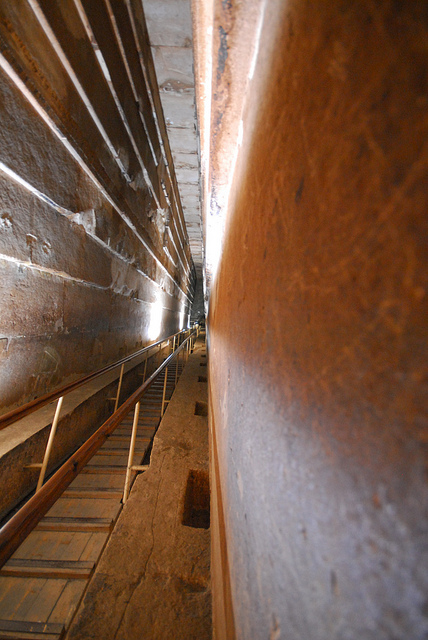
Finally, there’s a short, stooped passage to crawl through and then you are inside the King’s Chamber. It looks nondescript – a rectangular granite chamber with an open, damaged sarcophagus – but mystical properties and New Age theories of sonic energy have been ascribed to the specific dimensions of the room.
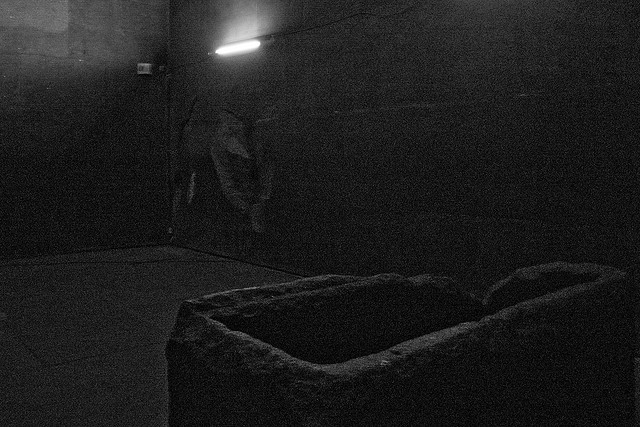
In fact, during my previous trip inside the Great Pyramid, there was a group that was chanting when we reached the King’s Chamber. Marc and I were lucky enough that we had the chamber completely to ourselves for several minutes. It was a little eerie and a lot incredible to be alone in the belly of that structure.
After exiting the Great Pyramid, we used it as the starting point for our tour of the Giza Necropolis.
The Great Pyramid is pretty awe-inspiring. It is the oldest and largest of the three pyramids at Giza. After it was built, it remained the tallest man-made structure in the world for more than 3,800 years, until the Eiffel Tower finally surpassed its height in 1889. It is estimated to weigh 6 million tons. It is the oldest of the Seven Wonders of the World, and the only one that remains intact.
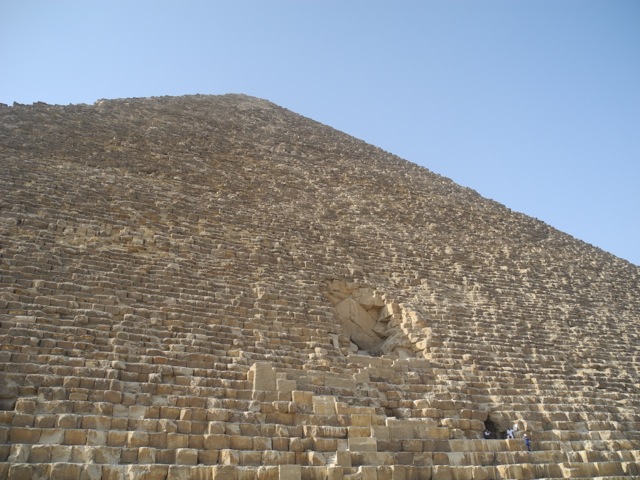
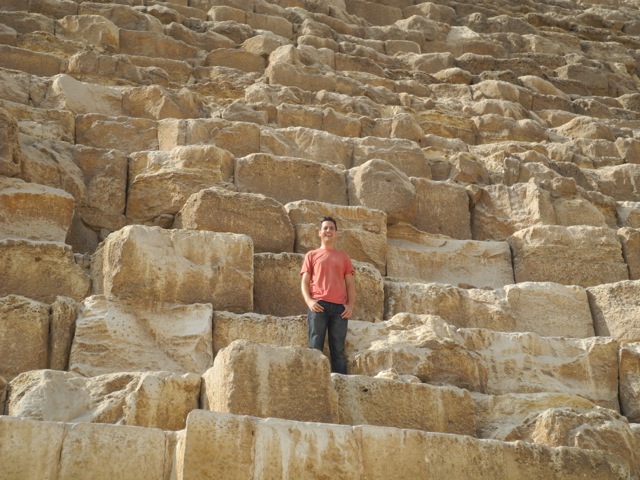
Next, we hiked over to the Pyramid of Chephren. This pyramid appears taller than the Great Pyramid because it is situated on higher ground, has steeper sides, and still has some of the casing stones clinging to its summit.
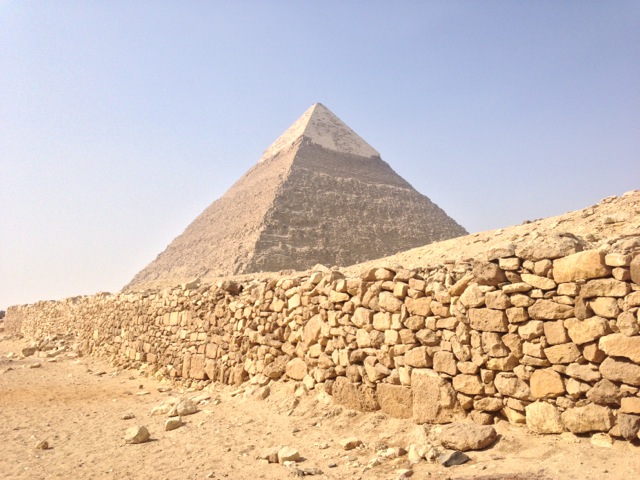
Finally, we took a look at the smallest pyramid, the Pyramid of Menkaure.
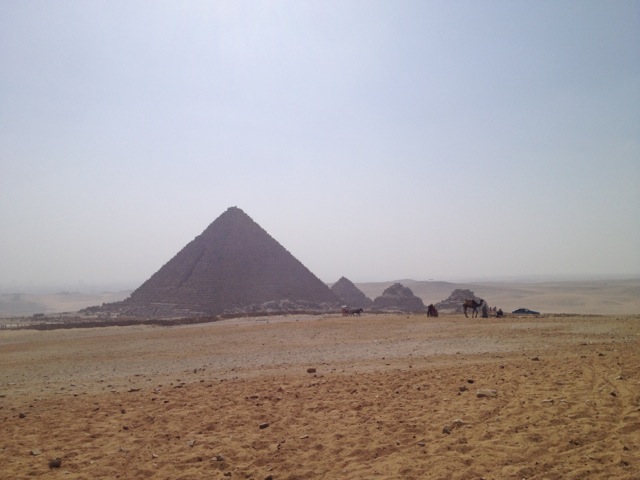
To get a decent shot of all three pyramids, you generally have to go pretty far into the desert … unless you use your iPhone for a panoramic shot!
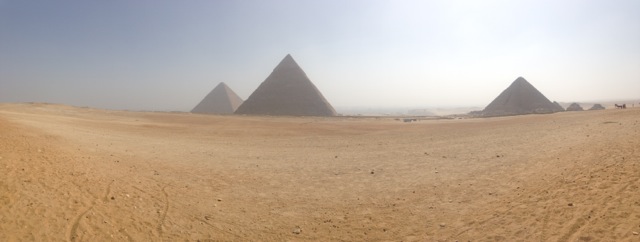
Camera-related shenanigans were a common theme that emerged from the reviews we read on TripAdvisor complaining about the Giza Necropolis. The conventional wisdom is that, unless you want to pay a baksheesh ransom for your camera’s return, you should not hand it over to someone making an unsolicited offer to take your picture, so we took a bunch of selfies.
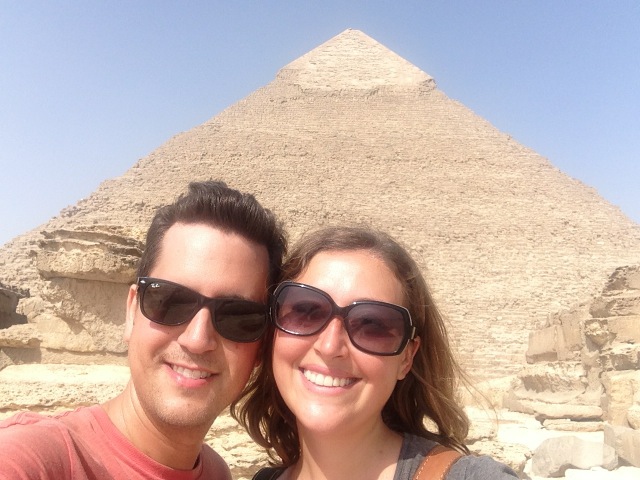
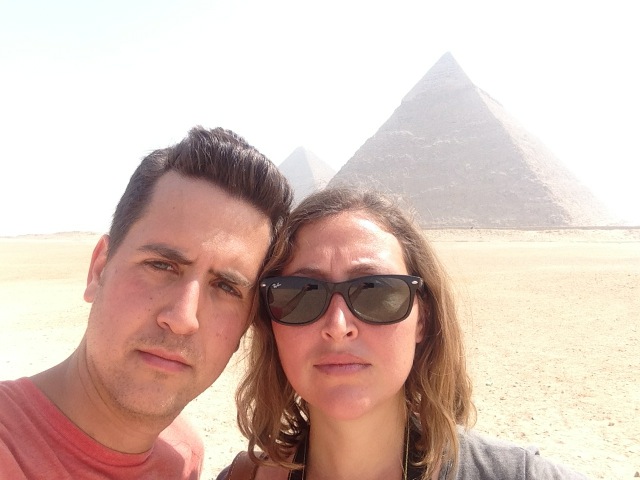
Then we headed for the Sphinx, which is easier said than done. There were plenty of people who wanted to give us a ride on their horse or camel, but we decided to walk … and managed to get a bit lost in the remains of one of the funerary complexes. It was an interesting detour, but the guard who spotted us wandering through an area that was apparently off-limits was less than amused.
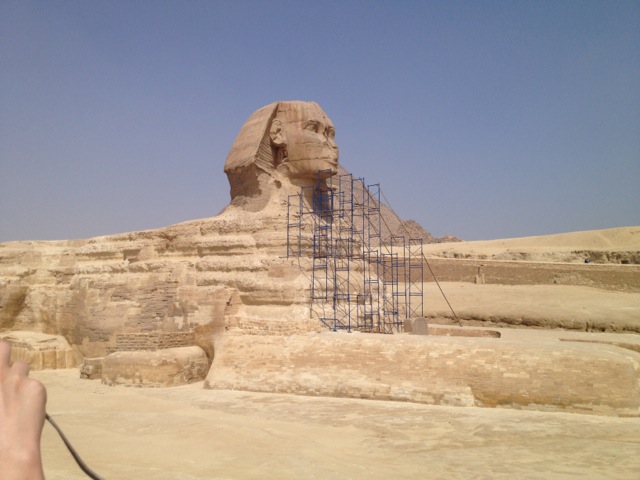
We jostled with a bunch of other tourists to get our pictures of the Sphinx, and then headed across the street for an air-conditioned lunch (with a view!) at KFC.
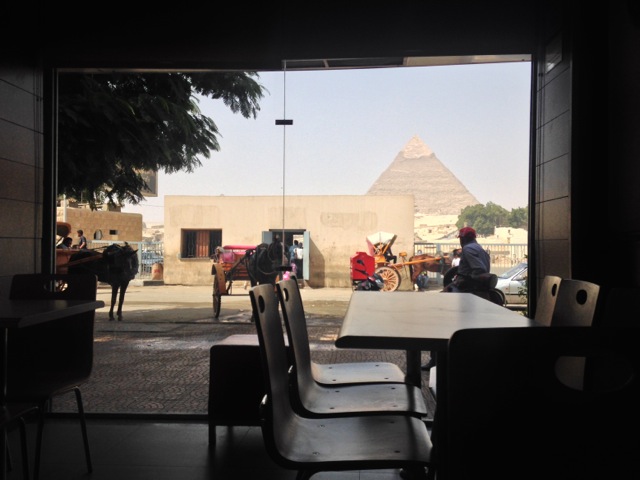
Saqqara
Our next stop was Saqqara, an ancient burial ground that is the site of the famous Step Pyramid (formally known as the Pyramid of Djoser). The Step Pyramid is considered to be the world’s earliest example of large-scale stone-cut construction. It is currently under restoration, although there are differing opinions as to whether the restoration is helping or hurting the ancient structure.
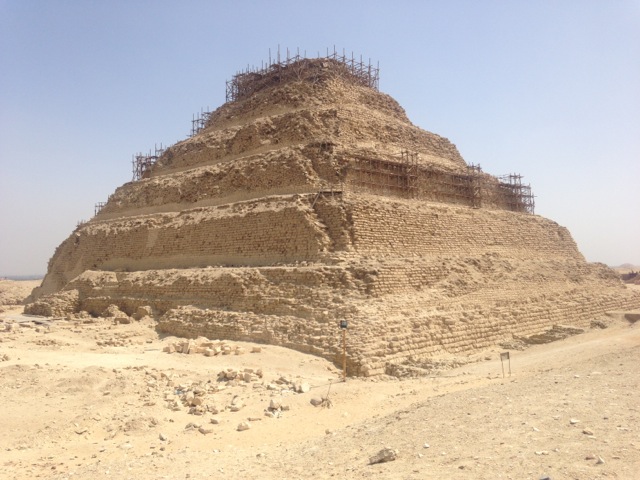
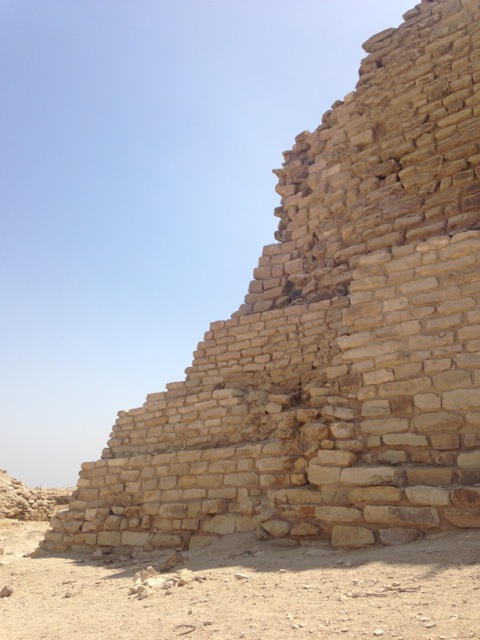
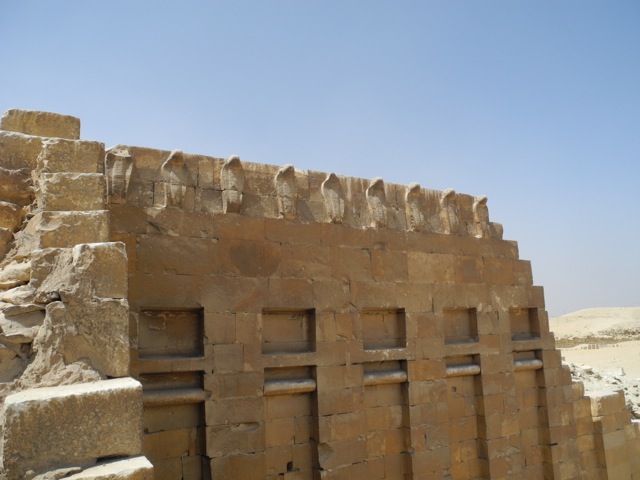
My favorite part of Saqqara is the statue of Djoser hidden inside a large masonry box on the north side of the pyramid. There’s a tiny hole, and, if you peer inside, you can see Djoser, staring northward to ensure his immortality.5
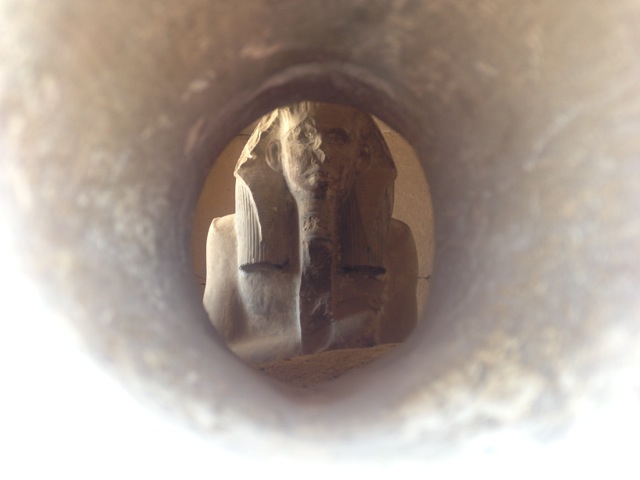
Our guidebook recommended that we check out the tombs of Idut, Khenut and Nebet, so we negotiated a payment with one of the guards to unlock them. The tombs were small, but the artwork was amazing. Here are some examples:
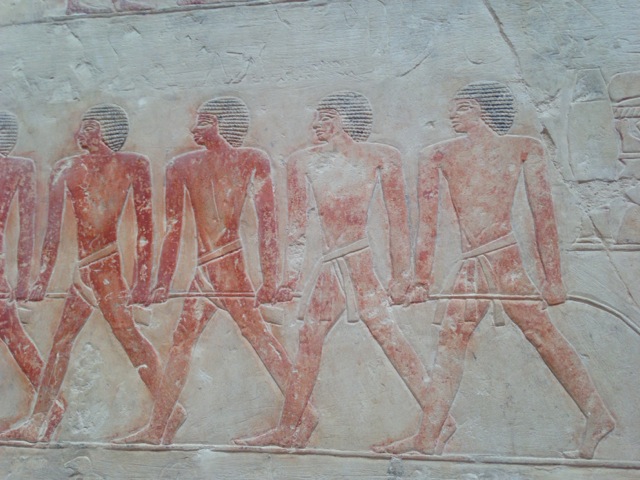
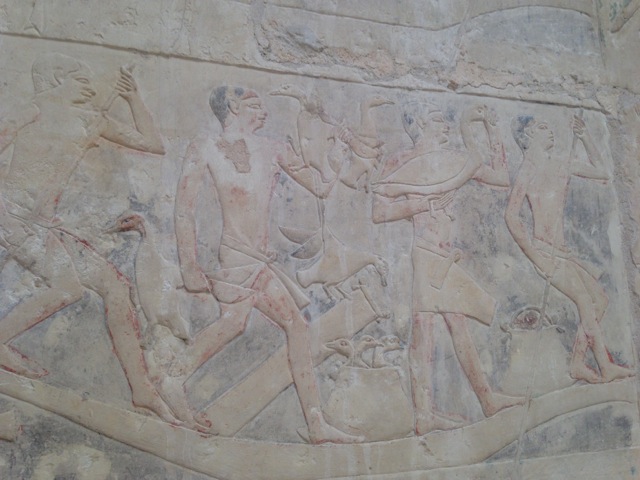
We wrapped up our visit to Saqqara by quickly stopping at the Imhotep Museum. Opened in 2006, this excellent, onsite museum contains many of the artifacts excavated in the area around Saqqara.
Memphis
We were really hot and exhausted after wandering around Giza and Saqqara (which we visited at the hottest part of the day – learn from our mistake!), but, luckily, our last stop of Memphis was pretty low-key.
Memphis was an ancient capital, but now the site is basically a sculpture garden.
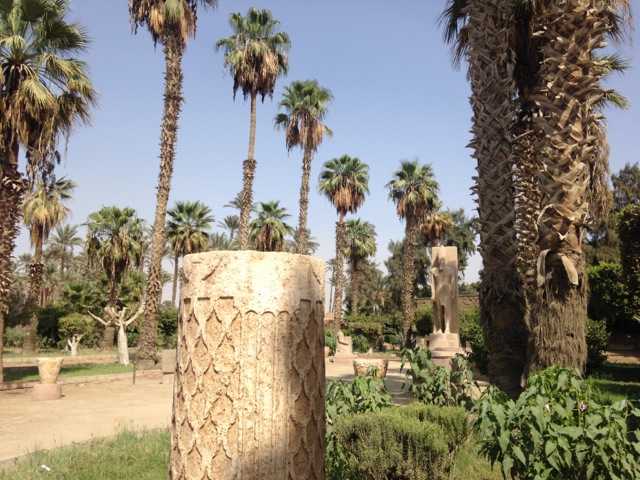
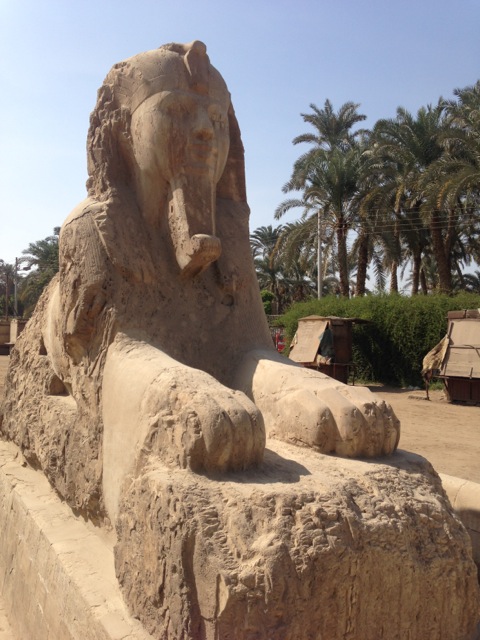
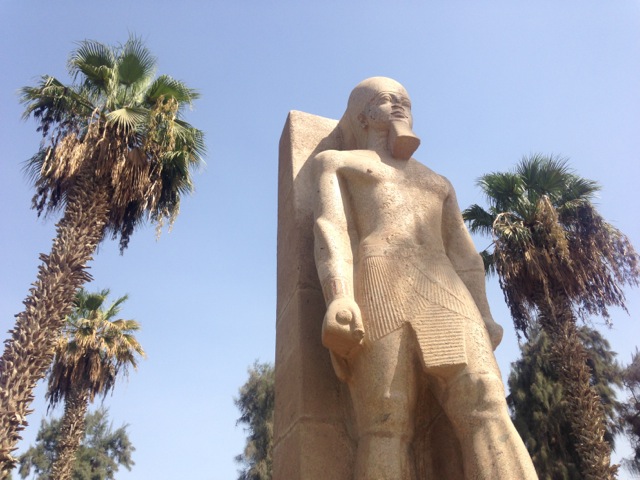
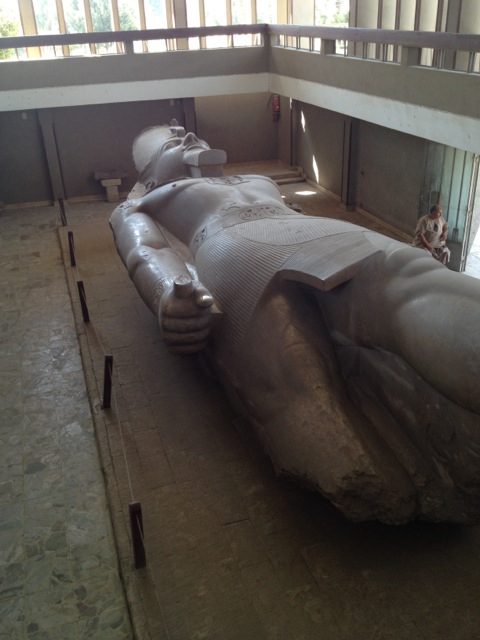
Our day was incredible, but I wouldn’t necessarily recommend you do things the same way that we did, especially if you, like us, are visiting Cairo at the end of summer. If I had to do it again, I would split up the Giza Necropolis and Saqqara into two days (we were pretty hot and tired during our Saqqara visit, and we might have enjoyed it even more had we been fresh) and give Memphis a pass.
Where We Ate:6
☆ Abou el-Sid. It was nearly impossible to get anyone to wait on us, but we had some tasty dishes: baba ghanoj, bessara, taʿamiya.
1 With the temperature rising well above 100°F on the day we made this trek, I might have been pretty miserable without an air-conditioned car to cool off in when traveling between the sites.
2 Extra credit reading: The Time I Outran a Tour Bus in Egypt, about my race to get inside the Great Pyramid during my first visit to Egypt in 2007.
3 Although our guidebook is written as though you can access more passages, I have never known that to be true. It certainly wasn’t an option during either of my visits, and I have never read anything online that would suggest it is a ever an option for regular tourists.
4 Cameras are not permitted inside the Great Pyramid. We left our cameras by the door, as requested – obviously, not everyone on Flickr obeyed this rule.
5 The statue of Djoser is a replica. The original is housed in the Egyptian Museum – and we saw it the next day.
6 Aforementioned KFC aside.

